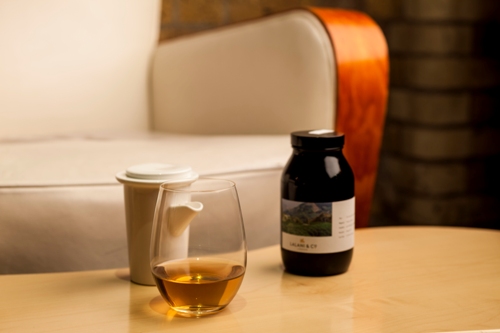The Honey Special 2013: A one-of-a-kind oolong
From Ms Huang’s garden on Jade Mountain in Taiwan comes this 20kg batch with layers of complexity and an intriguing story.
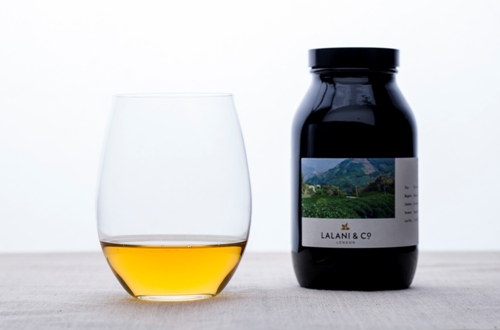 A jar of ‘The Honey Special’ Oolong from Taiwan.
A jar of ‘The Honey Special’ Oolong from Taiwan.
OOLONGS
An oolong is a style of tea that is partly oxidised, hence the leaves will look somewhere in between a green and black tea. Their slow semi-oxidation and high quality varietals result in a flavour spectrum that makes oolongs the most complex and enchanting of tea styles. The Taiwanese are experts at oolongs. A fine Taiwanese oolong is one of the must-have items that should grace every foodie home. Their nuanced flavours are a delight for the senses, and will surprise even the most discerning of guests when the come for ‘tea’.
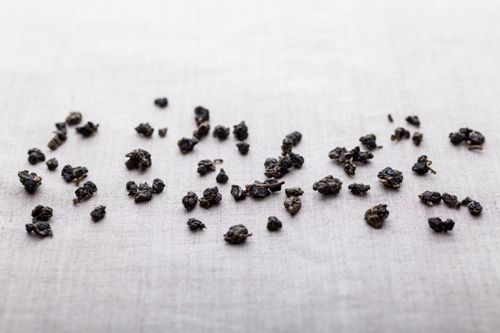 High-mountain Taiwanese oolong leaves
High-mountain Taiwanese oolong leaves
High mountain Taiwanese oolongs are pearl-like in appearance. Each pearl is a tightly rolled formation of leaves and bud which unfurls slowly as it’s infused. Teas like this will infuse several times and I can recommend drinking 5-7 infusions (from the same leaf) throughout the day. With each infusion, the water penetrates deeper into the leaves, opens up the pearls and draws out different variations of its flavour notes.
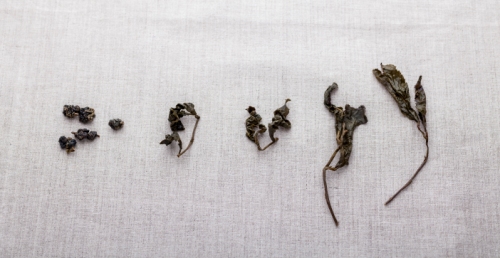 A pearl expanding over several infusions
A pearl expanding over several infusions
A SPECIAL BATCH
In Spring 2013, we bought a batch from Ms Huang’s garden in Taiwan. Restaurants like The Hand & Flowers and Dinings have been delighting their guests with this tea. This batch is rather special.
Ms Huang and her husband own a garden on Jade Mountain (Taiwan’s highest mountain). They believe in the importance of organic farming and converted the garden to organic, meeting the EU standards for organic production.
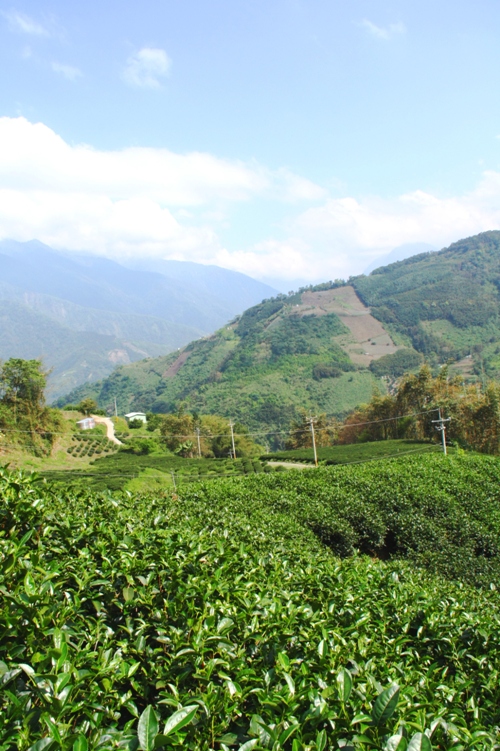 Ms Huang’s Garden, Jade Mountain, Taiwan
Ms Huang’s Garden, Jade Mountain, Taiwan
This batch was picked in the Spring. For high mountain teas from Taiwan, Spring and Winter are the best seasons to look for. The tea was made from plants of the Chin-Shin varietal (sometimes written ‘QinXin’); a highly aromatic varietal, grown at high elevations. The Chin-Shin produces teas of exceptional quality, with a lower yield than some of the other varietals.
What makes this batch so special is the higher temperatures and lower rain in the 2013 season. These weather conditions encouraged the tea green leafhoppers to come early. These leafhoppers feed on tea leaves. When this happens, the leaves produce a defence antibody that gives the leaves a honey fragrance. The leaves are picked (without leafhoppers of course) and made into tea in the oolong style, then roasted to enhance the flavour.
We tasted the batch when it was unroasted, then roasted once. This roasting enhances the aroma and also imparts a honey-tobacco note to the tea. At our request, Ms Huang gave a double-roasting to our 20kg allocation. The result is a tea with extraordinary complexity: A honey-floral opening, creamy smoke texture, hints of fruit and a honeyed tobacco finish. Each infusion brings out different elements of the tea’s profile.
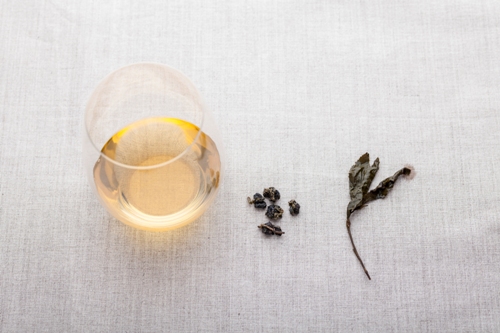 ‘The Honey Special’ 2013; infusion, dry leaf and infused leaf
‘The Honey Special’ 2013; infusion, dry leaf and infused leaf
INFUSING
Here’s how we like to infuse this batch:
Place 6g (1 tbsp) of tea in the pot/infusion vessel (150ml preferably). The Lalani & Co Infusionware is designed specifically for accurate single infusions.
Boil water to 85°C. You can do this with a temperature select kettle, or stop the kettle when the bubbles are about the size of large peas. Pour a little of the hot water into the vessel, enough to submerge the leaves. After 10s pour the water out. This ‘wash’ wakes up the leaves which have been tightly rolled.
Then make the first infusion. Pour 150ml (tea cup) water onto the leaves and allow them to infuse for 1 minute. Decant the tea entirely into a glass or cup. The leaves in the pot should no longer be sitting in water. This prevents the tea from over-infusing. Repeat this step for the subsequent infusions. After 4 infusions, you may want to increase the infusion time. It’s up to you. Experiment to find what you prefer.
The first infusion is always the simplest and sweetest. The honey florals will dominate. With later infusions, the base notes emerge. There’s more fruitiness in the 2nd infusion and the tobacco notes start to appear. By infusions 3 and 4, honeyed tobacco is a dominant note. I often push this tea to 7 infusions.
This tea is so beautiful. At the end of a hard day, this is the tea I turn to.

